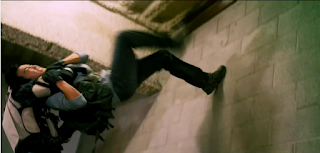Several historical factors influenced the rise of the American Anti-Hero in cinema. After the end of World War II, America felt a need for a new type of hero. From this, the birth of the Anti-Hero had begun. For one, America wanted to see new kinds of heroes to represent the new, post-war America. They also wanted heroes to rebel, as if the American public themselves were rebelling. America also wanted human heroes, people that have faulty qualities because they are human, like the real heroes of America. Lastly, America wanted a hero to represent true American spirit, whether it be good, bad, or ugly.
 First, America felt that after they had won World War II, they had become a new, restored country. They felt that they needed a new type of hero to represent that. After being a part of a new World War and the Cold War, America was put in a state of paranoia, or unsettling. The reason that the Anti-Hero succeeded during these times was because "'People were relating to the hip non-hero who was not involved in world problems but devoting his time to overcoming his own personal problems'" This characteristic allowed this new kind of hero to be accepted in America and Hollywood films.
First, America felt that after they had won World War II, they had become a new, restored country. They felt that they needed a new type of hero to represent that. After being a part of a new World War and the Cold War, America was put in a state of paranoia, or unsettling. The reason that the Anti-Hero succeeded during these times was because "'People were relating to the hip non-hero who was not involved in world problems but devoting his time to overcoming his own personal problems'" This characteristic allowed this new kind of hero to be accepted in America and Hollywood films.America was also becoming more rebellious. After enduring two wars, they were left with almost nothing, and weren't going to take anything from anybody. Advocating people's rights and freedom were related to by many Americans. Relating to this group of people meant that they would stress a stronger relation to the anti-hero who exerted being an individual more than any other.
Also, Americans wanted a human hero, with his flaws and capability of being an ordinary man, like anyone in the audience. The perfect and charming hero began to lose favor among Americans. Instead, they wanted someone like them, able to accomplish great tasks using their own human strength. Having an anti-hero like this would allow the audience to find the motivation to believe that they can achieve such great tasks as well. "The anti-hero is rarely happy in situations that please other men. He prefers conflict and struggle rather than comfort and certainty.” This contrasts the standard perfect hero, who would give everything of himself for the sake of others.
America wanted to have heroes that represent the spirit of America itself. "The anti-hero became a darker, edgier character, who was just as confused as the average American" The average American could easily relate to the Anti-Hero because of his edgy quality, which represented the spirit of America for "the country went askew from what was once a politically and dogmatically ironclad identity."





















